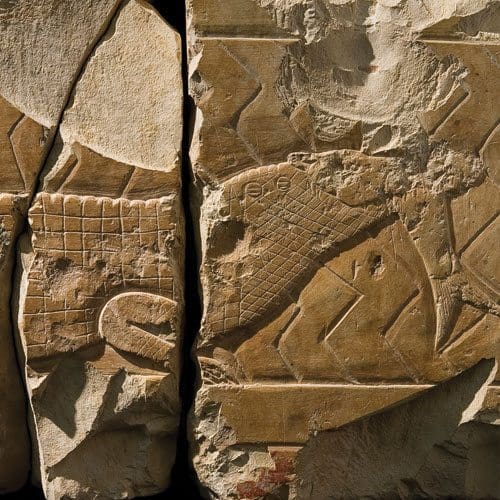This Egyptian limestone relief of a crocodile resides in the Krieger School’s Archaeological Museum. It comes from the funerary temple of Mentuhotep II, the Eleventh-Dynasty king who reunited Egypt and launched the prosperity of the Middle Kingdom. Mentuhotep built his funerary temple at Deir el-Bahari, on the west bank of the Nile across from his capital at Thebes. The relief was recovered in 1905. Archaeologists believe that it probably fell from its original position on a wall in the southern part of the temple.
Crouching on a smooth band 3 cm high, the crocodile is gripping a fish in its teeth. The relief is characteristic of Middle Kingdom sculpture in the sharp contours and absence of interior modeling. The contrasting zigzags for the water and the diamond and grid patterns of the crocodile’s body is counterbalanced by the smooth surfaces of the fish. This sunken relief fragment derives from a scene of the king fishing and fowling in a marsh environment and was situated on an exterior colonnade of the temple. Scenes of this type symbolically allude to the ruler’s ability to tame the watery chaos—represented by the crocodile.
In ancient times, the Nile crocodile was about 10 m long and lived along the Nile Valley. Today, the crocodile is about 3 m long and is found in central, eastern, and southern Africa.
Scholars continue to study the relief to gain additional clues to what life was like in ancient Egypt. Learn more about the collections of the Archaeological Museum at archaeologicalmuseum.jhu.edu.


